If you want to train and complete a marathon, you have to create an aerobic Marathon base, which means that you have to see it as a project where you create a frame and fill it out with the most important elements. The aim is how to train for a marathon and successfully Complete it. You develop a personal marathon program, and then you can establish a plan to meet this goal. We follow logical steps, but the programs can be developed from different basic principles.

Train for a marathon
It is crucial for a training program that it’s personally developed and adapted. Then you can move forward from your current running level and pattern. It is not a good idea if you make a training program, where you have to run many km every week and have previous experience with injuries when the kilometer volume increases too much.
In such cases, it is a benefit to include cross-training activities. You can e.g. use the elliptical trainer/cross-trainer, which performs standing with leg and arm movements similar to running, and the machine is very gentle for your legs.
Training types go from volume training (quantity) – like with the running legend Arthur Lydiard, who really developed the LSD concept – to quality training, which often is intervals and tempo runs.
Marathon training programs should have the purpose to optimize the training concerning both your physical shape and capacity, as well as to the marathon race or another running goal. The progress happens through systematic and flexible training, where training types are prioritized and structured to where you are in the training course.
Long term results
Maybe you just want to complete one marathon and then “retire”, and that is absolutely okay, you can use a program to reach that goal. However, if you are a long-distance runner who wants long term results and improvements, then you have to train regularly throughout the year and add shape peaks related to the distances, you have chosen to run and when to run them.
I want to explain and show you opportunities here too. A training program helps to ensure your shape progress. In this way, you can always see where you are in the course. You can use checkmarks or milestones; add notes to the program and other things that may support you.
You will also feel more certainty even excitement, when you have created an overview of the training, where you can see all the way to the goal(s) and what kind of training, you have to perform on the way.
If you are a member of an athletic club, you probably know what season planning/frame plans mean. Often, they hang on the wall by the changing room.
Let me give an example from my own running career:
Marathon Training And Periodisation
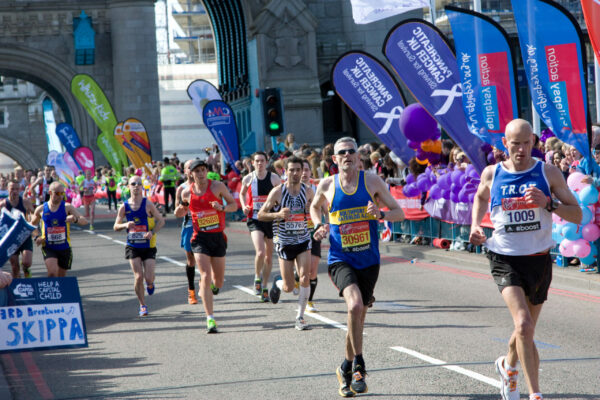
Particular experienced long-distance runners use Periodisation since they run all year round. Periodization means that we organize the training into phases during a chosen time frame, with a focus on specific training types.
When we start up in January, we have a time frame forward to the season starting at the end of April. We call this period “winter training”. The period splits up into 4 – 8 weeks phases where each phase builds on the previous one.
The phases allow us to combine the benefits of different training types that collectively aim to reach a shape peak on a chosen goal. The first phase is always most focused on basic training, which means endurance training, the long easy runs LSD. Then we add other training types in the following phases. In this way, we increase the chances to reach a higher performance level.
Our coach uses a Gantt diagram since a Gantt project chart graphically can display all training phases in relation to one another along a timeline. Milestones illustrate a shift from one phase to the next.
Key races/test runs and a combination of training types fill out the diagram with details. Hereby we get an illustrative and structured overview of the process as we print and hang it on the wall by the changing room.
As you see, you can build up a marathon training program by using time frames and combining the benefits from different training types to optimize your performance, depending on the number of shape peaks you want to achieve and what distances you choose in the season.
City Marathon
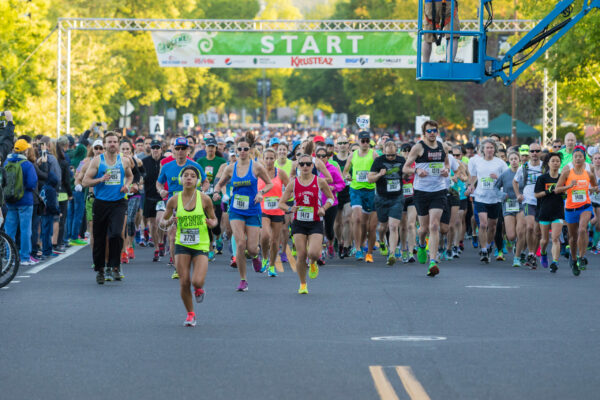
Many people who sign up for their first City marathon and complete, do not return to their next marathon because they don’t understand the pre-planning and just follow a program from the internet and probably chose one that is too ambitious for their level.
However, I just want you to know about your running opportunities. The frame plans are used to ensure structure in the training and provide an overview of the development you want, from the Marathon goal you have set up.
The first time frame is about basic training, where a training volume (kilometer volume) gradually increases so that your base is sufficient for your goal. The next frame plan aims to create a shape peak for the desired race.
In other words, the first frame is about creating a base, which predominantly is about quantity training, and the second frame builds further on this base, with a focus on the specialization, and quality training for your chosen race.
Best Marathon Training Plan
The best marathon plan starts with a frame plan. The time frame describes the forthcoming training sessions and provides information about core concepts in the training such as the number of weeks forward to the race day (competition), or if you want, the number of weeks down to the race day, training types, expected training actions and training volume in kilometers per week.
A frame plan may look like this:
| Week | LSD 1 | LSD 2 | LT Intervals | VO2 max. |
Fartlek/Hill training | Km/week |
| 1 | ||||||
| 2 | ||||||
| 4 | ||||||
| 5 | ||||||
| … | ||||||
| 14 |
Depending on your current running level, the weeks shortens or extends. The training program fills out the frame plan with details; it specifies what to do and when to do it, like when you run Fartlek or LSD.
In this way, we create a program that describes the week’s training days in a structured way. The training program will include some core elements such as training volume, variation, quality training, rest and recovery.
The core elements are put together in a way, where the body gets time to adapt to the training, which means it’s not a good idea with several hard training days in a row. It is also important that the training spreads evenly over the weekdays, and that you do not compress them to a few days after each other.
So, to target and manage your training and keep you committed and focused in the best way, it’s a benefit with a frame plan and thus a training program with a time horizon, which means a goal or milestone at the end.
When training for a marathon, it is not just your physical shape, which is crucial. In particular, the body’s tendon tissue has to adapt to the training load through a sufficiently large training volume before it is justifiable to accomplish.
The basic training

A precondition to achieving a good result on the race day is good preparation – the basic training – your base. That you have created a good base and later sharpen your shape with more intensive and targeted training.
Many months of training will be tested in a relatively short time when you are at the start line of the marathon race and with the many hours, you have completed during training.
Without the basics, there is often a tendency to speed up the training and make it too intensive too early, which makes it hard to complete races both mentally and physically. Besides, you increase the risk of injuries and it contributes to destroying some of the motivation and the joy of running and hereby the training in the future.
The whole idea of basic training is that you slowly build up a training volume, which is sufficient to create a good shape peak for the race you move towards. Many experienced runners use the late autumn and winter months for basic training and to hereby create a good base.
Long Slow Distance
The core element of the basic training consists of long slow distances – LSD. In this way, the body slowly adapts to the load that characterizes long-distance running. To avoid being too one-sided and slow by the basic training, you can run some strides, where you increase the pace more and more to 100 – 150 m or where you keep a high pace of about 50 – 100 meters, just to maintain the speed in the legs and to vary the training.
You can include them in Fartlek later in the progress. It is also something that really makes you feel energized. In the latter half of the basic training, you should gradually accustom the body to the more intensive training that characterizes the training against a shape peak. The basic training period, therefore also contains some long 1500 meter – 2000 meter intervals with intensity around the LT- threshold.

Best long distance running shoes for men
Saucony Men’s Ride Running Shoe is a neutral all-around running shoe. It’s a versatile running shoe, ideal for your daily runs. This14th edition has a sportier look. The FORMFIT upper fits smoothly around the feet.
It gives a comfortable feeling without becoming too stiff and thus ensures a stable and confident running experience. The mask material is very breathable and keeps the feet cool.
Under Armour Hovr Sonic 4. These men’s running shoes – as in the image below – are built with HOVR ™ technology and deliver a flexible running step, which makes every kilometer feel effortless. The HOVR ™ foam construction provides excellent energy yield to achieve a sense of gravity.
For both men and women, you can choose from several colors. Paired with a lightweight mesh upper, this shoe makes any distance accessible. The women’s model is: Under Armour Women’s HOVR Sonic 4 Running Shoe
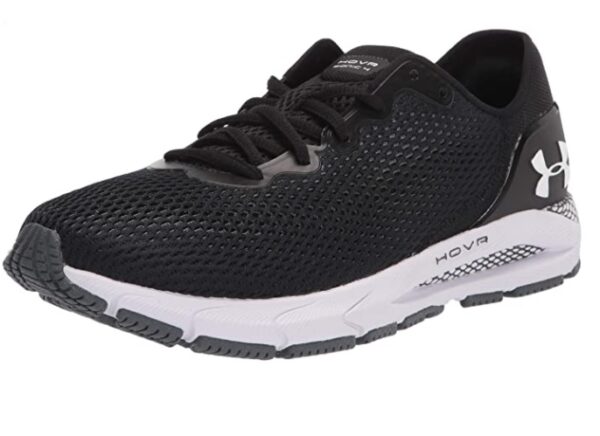
Best long distance running shoe for women
The COLDTRAC outsole is made of durable material, which provides more grip on cold surfaces than before. You experience good grip and traction on both wet and dry surfaces. Saucony Women’s Ride 14 Running Shoe is the women’s model in the image below. For both men and women, you can choose from several colors.
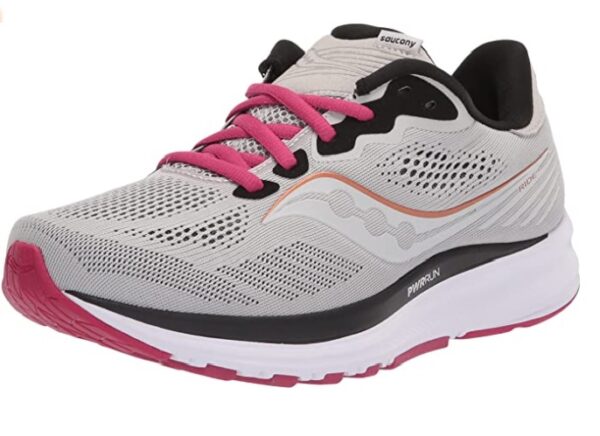
Marathon Training Program
Basic training takes place at all levels and is just as important for the experienced runner, who will provide a good basis for his marathon training as for the beginner, who starts up with jogging just a few minutes. We all have to practice the fundamentals.
How the content in your marathon-training program composes, depends on your current running experience but remember this:
As long as you do something consistently, whether it is just walking a few kilometers in the beginning, you will make progress. You begin to obtain the physiological improvements and benefits we talked about earlier.
Basic Training for beginners and runners with very little experience in long-distance running takes a longer time than basic training for more experienced runners since it’s not a good idea to speed up the training volume too fast. Experienced runners, still have much of the basic shape from last season. They are also adapted to a greater training volume.
Intermediate experienced runners only need about 10-12 weeks of basic training. However, many beginners will “suffer” if they only train for 12 weeks before their training intensifies. As a beginner, you should train for at least 18 to 20 weeks before the training intensifies, and before you begin to think about participating in races if you want to run with maximum performance. If you have experience in other sports, you can, if necessary shorten the weeks.
Basic Training programs for Marathon runners can be designed as below:
Marathon Training Beginner
| Week | LSD 1 | LSD 2 | LT – Intervals | Fartlek/Hill Training | Km/week |
| 1 | 3 | 2 | 8 | ||
| 2 | 3 | 3 | 10 | ||
| 4 | 4 | 3 | 12 | ||
| 6 | 4 | 4 | 14 | ||
| 8 | 6 | 4 | 17 | ||
| 10 | 7 | 5 | 20 | ||
| 11 | 7 | 5 | 20 | ||
| 12 | 7 | 6 | 22 | ||
| 14 | 8 | 6 | 30 min. | 24 | |
| 15 | 8 | 6 | 30 min. | 24 | |
| 16 | 9 | 7 | 2*2000 m | 26 | |
| 17 | 9 | 7 | 26 | ||
| 18 | 9 | 7 | 30 min. | 28 | |
| 19 | 9 | 7 | 30 min. | 28 | |
| 20 | 10 | 8 | 2*3000 m | 30 |
Marathon Training Intermediate
| Week | LSD 1 | LSD 2 | LT – Intervals | Fartlek/Hill Training | Km/week |
| 1 | 8 | 6 | 26 | ||
| 2 | 10 | 7 | 28 | ||
| 3 | 11 | 9 | 30 min. | 32 | |
| 4 | 12 | 10 | 30 min. | 35 | |
| 5 | 12 | 9 | 3*2000 m | 35 | |
| 6 | 14 | 11 | 30 min. | 40 | |
| 7 | 15 | 12 | 4*2000 m | 44 | |
| 8 | 15 | 12 | 30 min. | 45 | |
| 9 | 17 | 13 | 4*2000 m | 48 | |
| 10 | 18 | 13 | 30 min. | 48 | |
| 11 | 18 | 13 | 30 min. | 48 | |
| 12 | 20 | 12 | 2*3000 m | 50 |
Elaboration of the programs
The basic training at this level is focused on 4 key days with 2 LSD, LT – Training, and Fartlek. As you see the 4 key days throughout the week do not cover the complete training volume. The remaining amount of training accomplishes on other days at an easy pace as recovery runs. It will also give you some flexibility and make it easier to fit the training into your daily life.
Instead of a recovery run, you can sometimes practice cross-training as an alternative. Cross-training can include low-impact sports such as bicycling, swimming, exercise machines like the elliptical trainer/cross-trainer, and weight training that provide cardiovascular benefits, while also giving you a physical and mental break from running.
You can do most of that in a fitness center, or maybe you have an exercise machine under your bed. These types of endurance training can occasionally replace running, so you also avoid overtraining or other overload injuries. You may eventually note in your training diary, what kind of cross-training you have accomplished.
Long slow distance (LSD 1)
increases slowly in volume through the program. Toward the end of the program, you will be able to run the expected number of kilometers without breaks.
Long slow distance (LSD 2)
the pace here may be a little higher, but not more than “talk pace”. It will also be a good idea if you can find one or more hilly running routes to this LSD 2, both to create variation in the training but also to increase the training effect a little from LSD 1.
Lactate threshold training (LT – training)
At this level is also about variation to keep up the motivation. The pace should be nearby the lactate threshold, which means you should run faster than the LSD runs. This type of training helps to harden the body. You start getting used to a harsher and more direct way to train.
The pace should be near your half-marathon pace. If you have not run so far before, the LT corresponds roughly to the pace you can maintain for an hour with maximum effort. You can also use a heart rate monitor as a sports watch to find your LT zone.
Fartlek
Becomes a good alternative to the intervals. It is especially good for runners who are not accustomed to training at a high pace. By using fartlek, you decide how hard it should be from how you feel. This will make it easier for your body to get used to harder training from your own feeling.
It is therefore also easier to adapt the training to how hard the previous days of training have been. You get little by little a good sense of pace shift and your increased strength. However, it may be beneficial with a set of rules before you start.
Hill Training
Hill training performs like intervals and gives good muscle strength, coordination, flexibility, better running economy and variation. Try finding hills at about 1000 – 1500 Meter we prefer a circular route.
Then you can run easy downhill and on the flat pieces, and when it goes up-hills run with an intensity about the LT – Threshold. Find your own capacity ex. 4 times up-hills gives about 20 – 25 min. training around LT – Threshold.
Speed training workouts

It will also be a good idea to include speed training in your Fartlek. Strides are 100 – 150m accelerations where you start at low pace and accelerate to about 90% of your max speed, and then gradually slow down to jogging again.
One stride should take you about 20-30 seconds. Later in the program, you can include 5 – 10 strides in your 3 km race pace. Maybe it sounds unusual, that you as a coming marathon runner may have the benefit of speed training.
The purpose of strides at this level is that you avoid becoming too slow and one-sided by the training. Besides, it will make the marathon race considerably easier, if you include strides in the training because many beginners/intermediate runs with a slow cadence.
Quick short steps are actually more effective than longer slow steps. The shorter steps, the less you “jump up and down” when you run. Thereby is less energy needless wasted (better running economy).
With this kind of speed training, you will often discover that the other runs will be more effortless and comfortable. You program your legs to move faster, by activating and increasing the reactivity of your nervous system, which matches your running movements.
You will often experience the effect of speed training after a couple of weeks. Suddenly you run more easily because of the increased cadence. When you have completed the basic training here you are ready for the specialization.
Final Thoughts
This post intends to give you knowledge, purpose, direction, and motivation on why and how we move toward our running goals. Otherwise, it would be like in the movie Forrest Gump where Tom Hanks just runs and run without knowing why? It doesn’t make sense.
You can also find a ton of training programs on the internet that just show you what to do, when to do it and how long it takes to accomplish but not why you do it and what it gives you from where you are in the starting point and during the program.
I hope you like this blog and if you have any questions about the topic or want to leave your own Personal review, please leave a comment below.
[faq-schema id=”1363″]


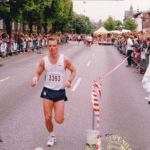



Nice article – makes total sense to build your body up to the level needed to run a marathon… otherwise you’ll end up injuring yourself. I love fitness but I’ve never run a marathon before… unfortunately I won’t get to do it now as I ruptured my ACL playing football and it’s not been the same since.
Hi Mohammad
Thank you for the comment.
It looks like you have found a good alternative in fitness.
Be Well
awesome review on how to train for a marathon, I have indeed been looking for such an article that could give me insight on how to go about building myself for a marathon training luckily I just don’t pull up on yours so grateful for all the tips will giving I can’t wait to start utilising them…
thanks for sharing, have a great day and stay safe
Hi evansese
Thank you for your comment. Happy that you can use some of it.
Be Well